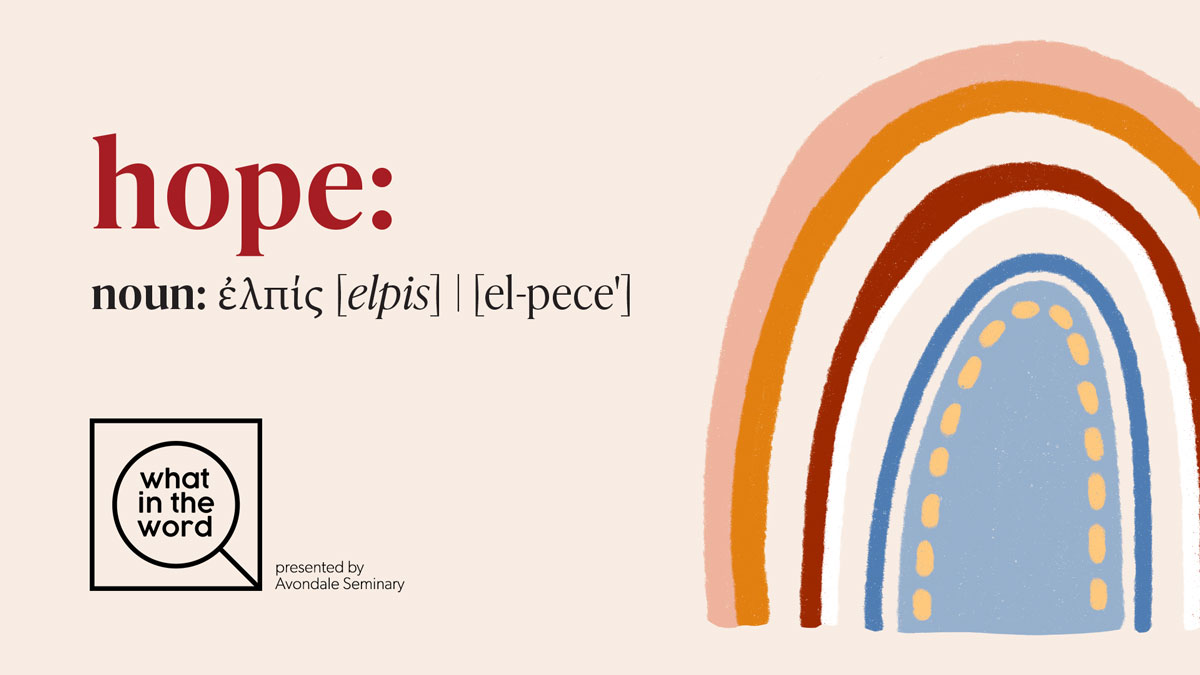Hope is expressed casually today. It suggests expectation, but has overtones of doubt. “I hope you’re right,” means “I wish you were right, but I doubt it.” It may indicate wishful thinking—“I hope I live to 100”, while to “hope for the best” can suggest underlying pessimism.
The ancient Greek word for hope—elpis—had similar meanings. Pagans generally recognised hope’s role in life, as a counterpart to fear, to provide comfort in crisis. But hope could be deceptive and dangerous—and was always uncertain. Some, the Stoics, wanted nothing to do with hope. To them, whatever happened was meant to happen, and it was wrong to hope for something else.
In the New Testament, elpis occurs 51 times. Some passages refer to the Old Testament messianic hope (Matthew 12:21)—traced back to Abraham who “hoped against hope” for descendants (Romans 4:18). This hope fulfilled in Jesus, was initially shattered by His crucifixion (Luke 24:21) but restored by His resurrection (Acts 2:26-31). New Testament writers also speak of their own hope, the “blessed hope” (Titus 2:13). This is not peripheral to faith but is the “hope of the gospel” (Colossians 1:23)—the hope to which we were called (Ephesians 4:4) and into which we were born again (1 Peter 1:3). This hope is listed as one of the three cardinal Christian virtues (I Corinthians 13:13).
There is one Christian hope (Ephesians 4:4), but it is characterised in various ways: hope “in the glory of God” (Colossians 1:27); hope for the renewal of creation (Romans 8:20); hope of righteousness (Galatians 5:5); hope of salvation (1 Thessalonians 5:8); and “hope of eternal life” (Titus 2:13; 3:7). All this points to the return of Christ (1 Peter 1:13) and the end of sin. For us, this means, above all, the resurrection of the dead (Romans 8:23). Since the epigraph on Roman graves was usually a bleak “Farewell”, it is no wonder that Paul could characterise pagans as having “no hope” (1 Thessalonians 4:13).
Christian hope deviates from other “hope”. It is not mere wishful thinking or pessimism thinly overlaid with optimism. It is certain (1 Timothy 6:17)! We will never be ashamed (Romans 5:5) by its non-realisation. Jesus will return; death will be vanquished. Indeed, with Christ’s resurrection, the final resurrection has begun. Our hope is no longer purely in the future. It is “laid up for you in heaven” (Colossians 1:5), like a gift already wrapped ready for Christmas. This hope is anchored “within the veil” of the heavenly sanctuary, where Christ our High Priest has gone as our forerunner (Hebrews 6:18-20). Christ is our hope (1 Timothy 1:1).
The Christian’s hope has current, albeit partial realisation now, in the lives of all who are “in Christ”. The Holy Spirit’s presence in a Christian’s life—“Christ in us” (Colossians 1:17)—is the beginning; the down payment on the hope to be fully realised at Christ’s return (Romans 8:20-26). Thus, hope is linked with joy (Romans 12:12); peace (Romans 15:13); courage (Philippians 1:20); steadfastness (1 Thessalonians 1:3); renewal (Titus 3:5-7) and purity (1 John 3:3). Objectively the hope is certain; subjectively it is conditional on us holding “to the hope set before us” (Hebrews 6:18; 10:23).
The relationship of faith, hope and love is clear. Faith looks back to salvation accomplished in the life, death and resurrection of Jesus. Hope looks forward to its full realisation at His return. Between these two great reference points, Christians live out God’s love—because they already live the life of the new creation (2 Corinthians 5:17).
Today’s world is beset by many apparently intractable problems—social, political, economic, environmental. The platitudes of the world’s leaders often amount to resigned encouragement to “hope for the best”. In such a world, “the hope of the gospel”—real, certain, already partially manifest—is “good news” indeed.
Dr David Thiele is conjoint senior lecturer of the Avondale University College theological seminary.







